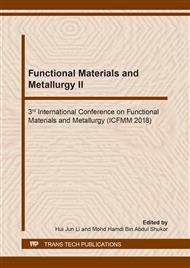p.86
p.92
p.98
p.104
p.113
p.119
p.124
p.129
p.137
Study on Control of Corner Cracks in Cast Slabs and its Application to Designing of Continuous Slab Casters of Baosteel Zhanjiang
Abstract:
Corner cracks are very likely to occur in the slabs when peritectic steels, medium carbon steels, boron or niobium micro-alloyed steels are being produced by continuous slab caster, which will lead to edge upwarping and edge cracking of the finished products in the rolling process. To stop the slabs with corner cracks from going down to the rolling mills and affecting the finished rolled product quality, the slabs must be flame scarfed in the continuous casting process, thus causing increases in the operational cost. In 2013, Baosteel decided to relocate the two single-strand 2,300mm slab casters from Luojing of Shanghai to Zhanjiang of Guangdong. The slabs produced by the slab casters at Baosteel Luojing were observed with serious corner crack problem. To solve the problem of corner cracks, CISDI worked hard together with Baosteel to extensively optimize and improve the bender roller arrangement, segment roller gap accuracy control, secondary cooling zoning, secondary cooling width control, dynamic cooling control model, dynamic soft reduction model, etc., and eventually the conundrum of corner cracks which were frequent in the slab casters when at Luojing was solved and the presence of corner cracks in slabs of peritectic steels, medium carbon steels, boron or niobium micro-alloyed steels has been decreased from over 90% to less than 1%. The present article focuses on the work done specifically on solving the problem of corner cracks in the designing stage.
Info:
Periodical:
Pages:
113-118
Citation:
Online since:
July 2019
Authors:
Price:
Сopyright:
© 2019 Trans Tech Publications Ltd. All Rights Reserved
Share:
Citation:


